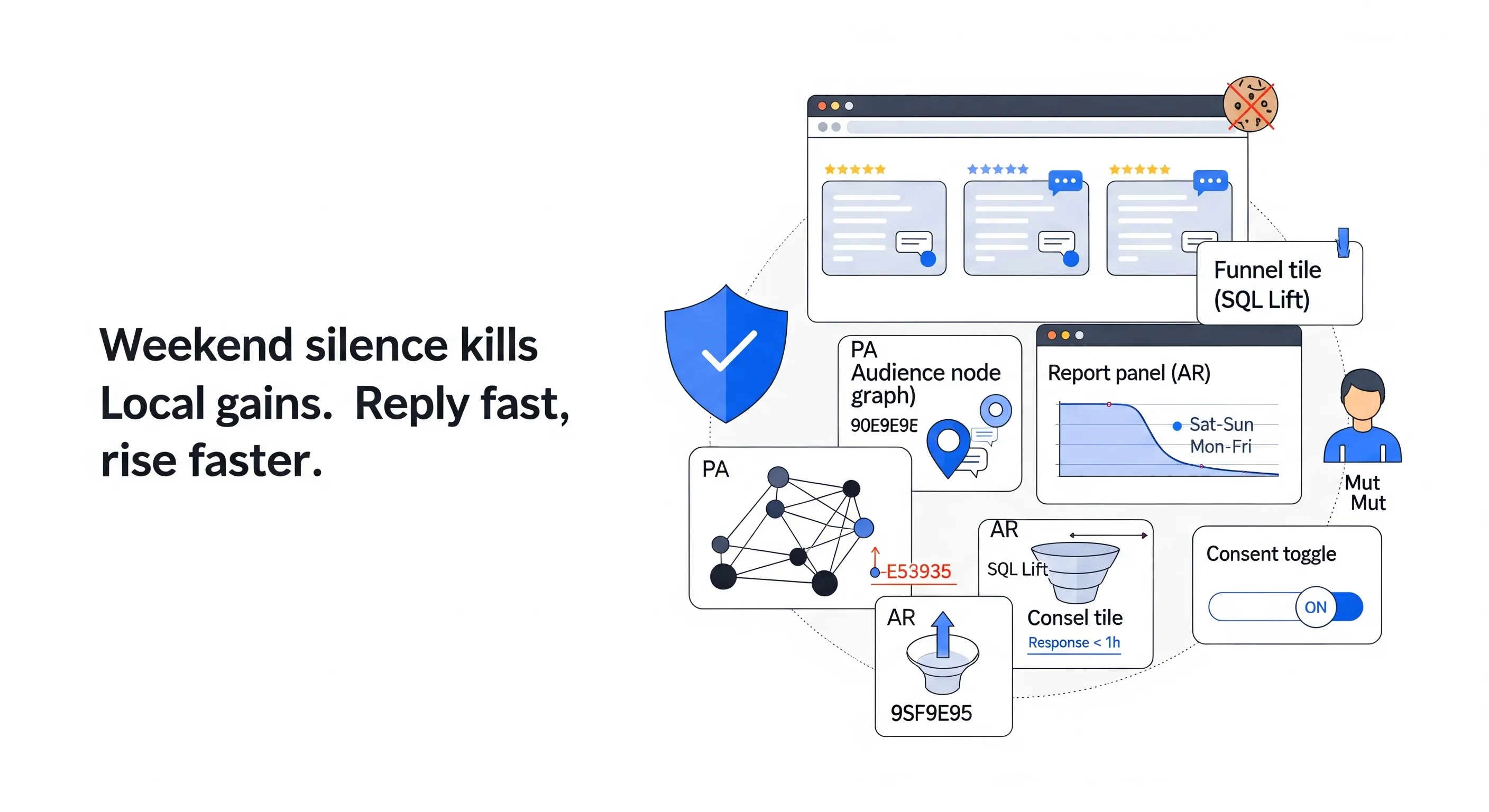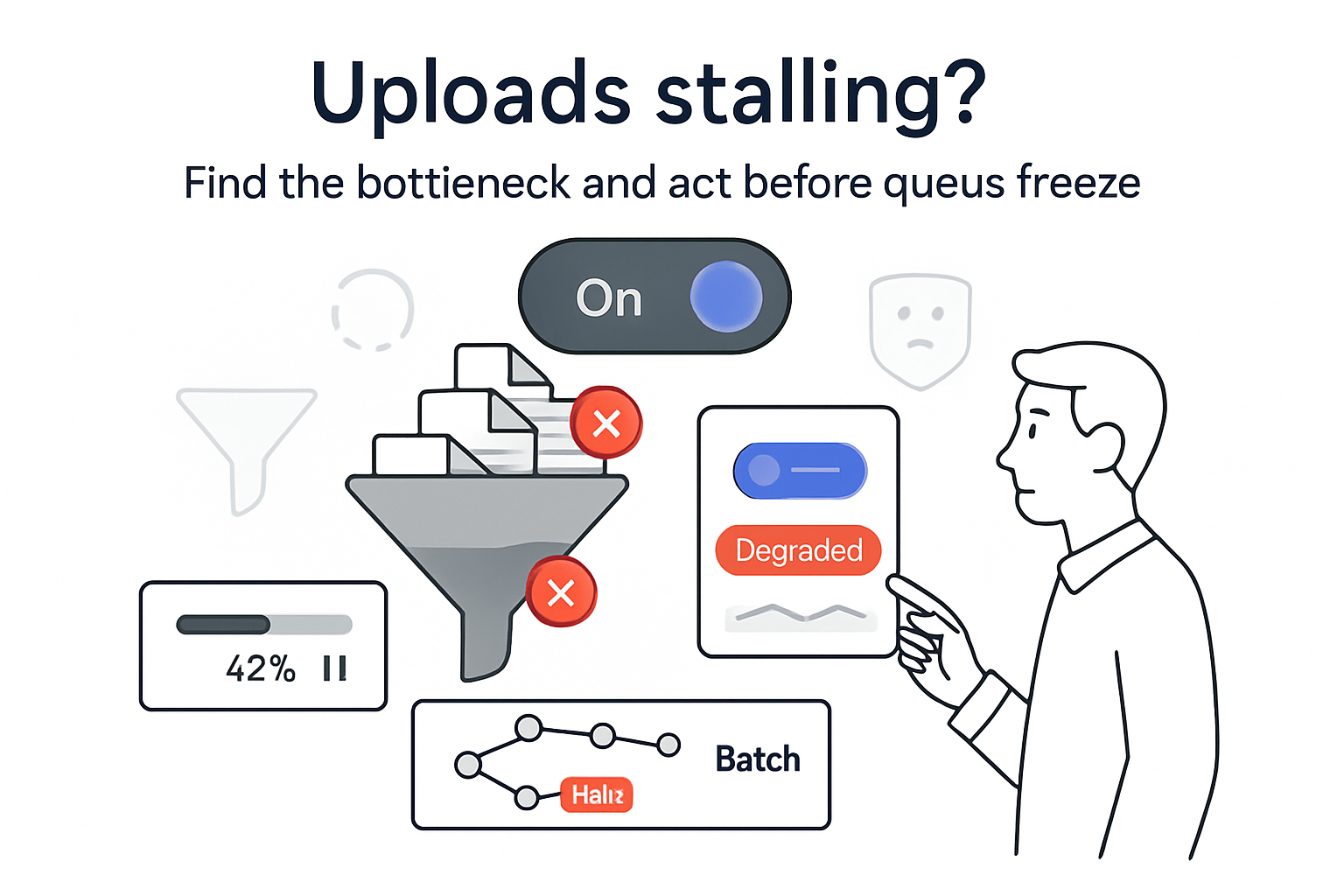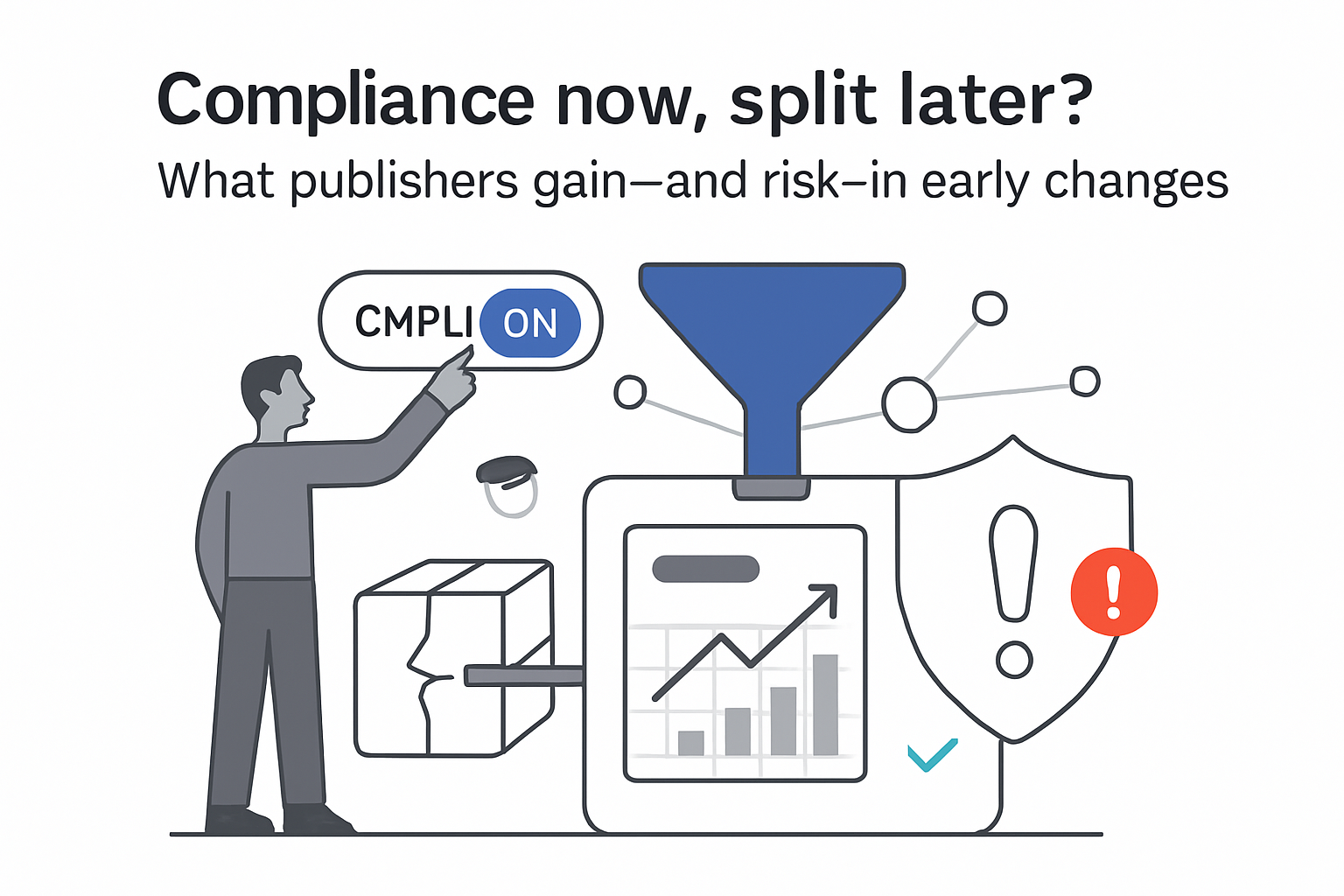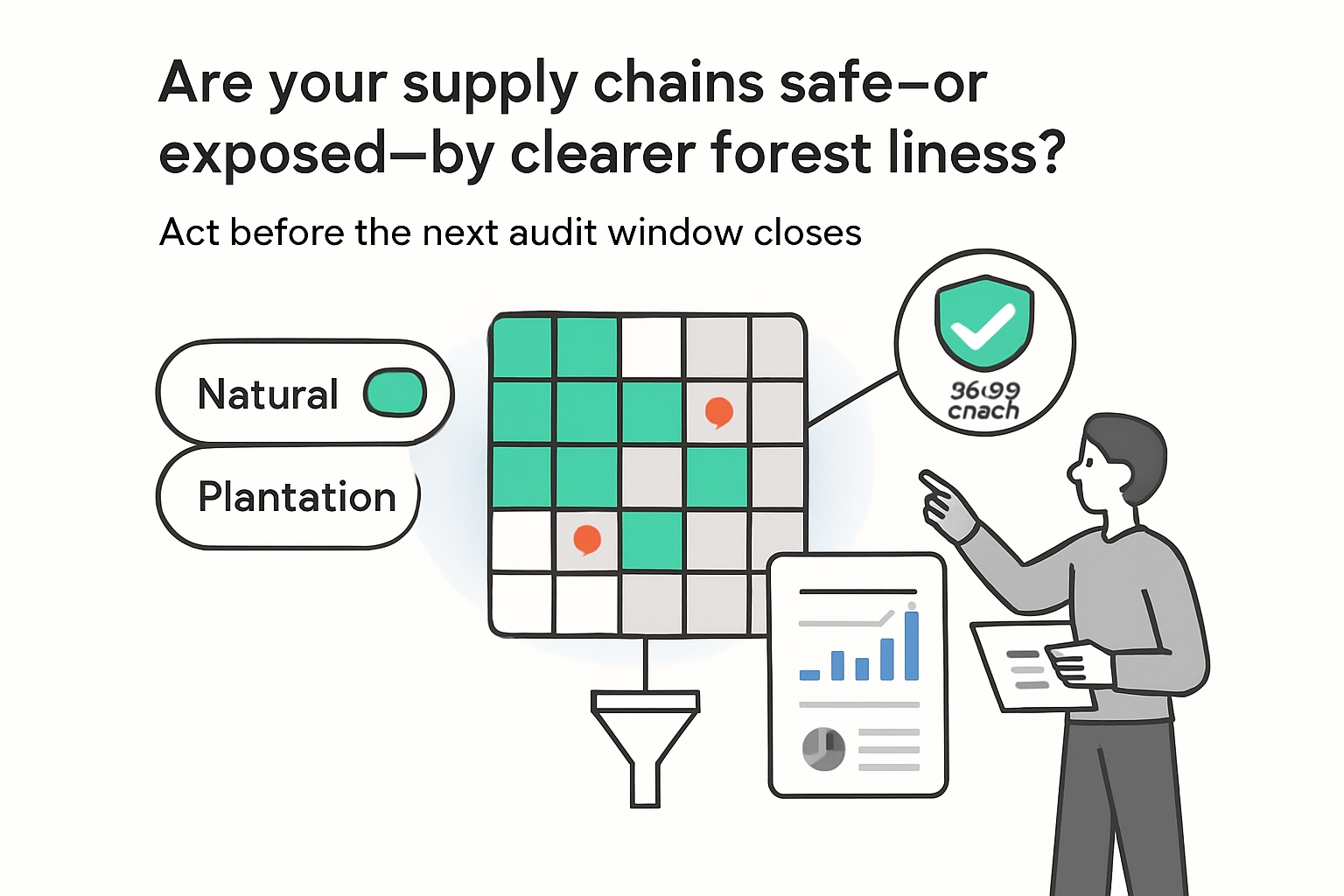Yext's new analysis of 8.7 million Google results finds that review engagement - recent, positive reviews and prompt owner responses - shows the strongest correlation with Local Pack visibility, with material differences by industry and region. The findings are correlational and limited to Google's Local Pack, not all Maps results [S1].
Executive Snapshot
- 8.7M-result dataset across six industries and 2,500 ZIP codes: review count, recency (new reviews per month), sentiment, and owner responses rank highest among 200+ observed features for Local Pack visibility [S1].
- Industry variance: Food & Dining correlates more with recent, high-rated reviews than with raw review volume; in Hospitality, photo quantity shows weak or negative correlation versus curated, high-quality visuals [S1].
- Regional variance: The Northeast shows weaker sensitivity to several traditional profile signals; slower review responses correlate more negatively in the South and West; weekend response gaps hurt visibility, notably in the Midwest [S1].
- External alignment: Google states high-quality, positive reviews can improve local ranking, and encourages responding to reviews as a trust signal. Practitioner surveys also rank review signals among top Local Pack factors Google guidance [S2], Whitespark survey [S3].
- Scope: Yext compared Local Pack placements to baseline Maps visibility; results reflect correlation within a proprietary dataset, not controlled experiments [S1].
Method and Source Notes
- What: Correlational analysis of factors associated with Local Pack placement versus baseline Google Maps visibility [S1].
- Who/When: Yext Scout Index research publication (2025), leveraging proprietary listings and performance data [S1].
- Scope: 8.7M Google results; six industries; 2,500 populous ZIP codes; 200+ attributes per business (reviews, responses, hours, media, profile completeness, social signals) [S1].
- External references for context: Google's guidance on local ranking (relevance, distance, prominence; reviews cited) and Whitespark's Local Search Ranking Factors survey [S2][S3].
- Limitations: Vendor dataset; correlational methods; proprietary feature definitions; industry and region coverage bound to Yext's footprint; no causal identification; specific effect sizes not disclosed [S1].
Local SEO ranking factors for the Google Local Pack
Yext reports that review-related metrics - review count, new reviews per month, sentiment, and owner responses - are the most consistent correlates of Local Pack visibility across industries and regions. Broader listing hygiene - profile completeness, accurate hours, and contact info - generally associates positively, though strength varies by vertical and geography. The study focuses on Local Pack placement, not organic listings or overall Maps rankings, and benchmarks against baseline Maps presence to isolate Local Pack-specific signals. These correlations align with Google's public guidance on prominence and reviews, and with practitioner surveys that rank review signals among top Local Pack factors [S3]. The evidence is correlational and vendor-sourced, so treat it as directional rather than definitive [S1].
Review management and owner response speed
Review engagement is the clearest cross-industry pattern. Timely owner responses to reviews correlate with better Local Pack placement, and delays - especially over weekends - correlate with lower visibility in several regions. Yext highlights that in the South and West, slower responses show stronger negative associations, and in the Midwest, weekend response gaps in particular coincide with declines. For Food & Dining, the cadence and quality of fresh reviews matter more than cumulative totals or fully maximizing every profile field. In Hospitality, sheer photo count shows weak or negative correlation, with better outcomes from a smaller, curated set of higher-quality images. These patterns reinforce prioritizing response timeliness and review freshness and sentiment, consistent with Google's guidance that reviews contribute to prominence and trust [S1][S2].
Industry and regional variation in local search ranking
The dataset shows non-uniform relationships between common listing tactics and Local Pack visibility. The Northeast appears less sensitive to several traditional profile factors, implying diminishing returns to checklist-style optimizations there, while the South and West show greater sensitivity to response latency. Category-specific nuances emerged: Food & Dining favors ongoing acquisition of recent, high-rated reviews; Hospitality gains more from curated, high-quality visuals than from large photo libraries. While foundational profile completeness remains positive in aggregate, its marginal association with Local Pack outcomes differs by vertical and region. Because the study is correlational, these signals should be validated locally with controlled tests or cohort analyses where possible [S1].
Local search strategy implications for marketers
- Likely: Implement continuous review acquisition and maintain rapid, consistent owner responses, including weekend coverage, given cross-market correlations and Google's emphasis on prominence via reviews [S1][S2].
- Likely: In Food & Dining, prioritize recency and rating mix of reviews over chasing absolute review totals or non-essential profile fields [S1].
- Likely: In Hospitality, focus on curated, high-quality photos and clear descriptions rather than maximizing photo counts; monitor against Local Pack visibility over time [S1].
- Tentative: Where response latency correlates negatively (South and West, weekend gaps in the Midwest), enforce SLAs for response times and test whether faster responses coincide with improved Local Pack presence [S1].
- Tentative: Treat listing completeness and ancillary features as necessary hygiene but validate incremental impact by market; allocate effort toward signals with demonstrated associations in your vertical [S1][S3].
- Speculative: Define response-time thresholds (for example, hours vs. next business day) through local experiments, since the study does not quantify exact windows [S1].
Contradictions and gaps in the evidence
- Correlation vs. causation: No causal effects or effect sizes are established; confounders like brand strength, proximity, query intent, and offline signals may influence both reviews and Local Pack placement [S1].
- Proprietary scope: Coverage and feature engineering reflect Yext's client base and platform, which may limit generalizability [S1].
- Signal breadth: Community findings such as GBP category, proximity, and keywords in the business name are prominent in expert surveys but are not central in this report's highlights, limiting comparability across studies [S3].
- Temporal unknowns: Exact observation windows and update cadences are not specified, affecting seasonality and recency interpretation [S1].
- Weekend effect size: Direction is clear, but quantitative thresholds are not provided, requiring local testing to operationalize [S1].
Data Appendix
- Dataset: 8.7 million Google results; six industries; 2,500 populous ZIP codes; 200+ business attributes tracked (reviews, owner responses, hours, contact info, media assets, social activity, GBP completeness) [S1].
- Outcome variable: Visibility in Google's Local Pack, compared against baseline Maps presence [S1].
Sources
- [S1] Yext Research - Best practices will only take you so far (Scout Index analysis of 8.7M Google results; Local Pack correlations; industry and region patterns). View the study
- [S2] Google Business Profile Help - How to improve your local ranking on Google (relevance, distance, prominence; reviews guidance). Read guidance
- [S3] Whitespark - 2023 Local Search Ranking Factors (expert survey of Local Pack, Maps, and organic factors). See survey








.svg)